I am so honored and excited to present to you this week’s article. It contains an interview with the UNBELIEVABLE master origami artist and a pioneer in this field, Dr. Rober J. Lang!

Origami is the art of folding paper which originated in Japan in the 17th century. In Japanese, “ori” means “fold” and “kami” means “paper,” so traditional origami does not involve gluing nor cutting. It is an art form that not only encourages creativity, but is accessible for free – all you need to get started is some scrap paper.
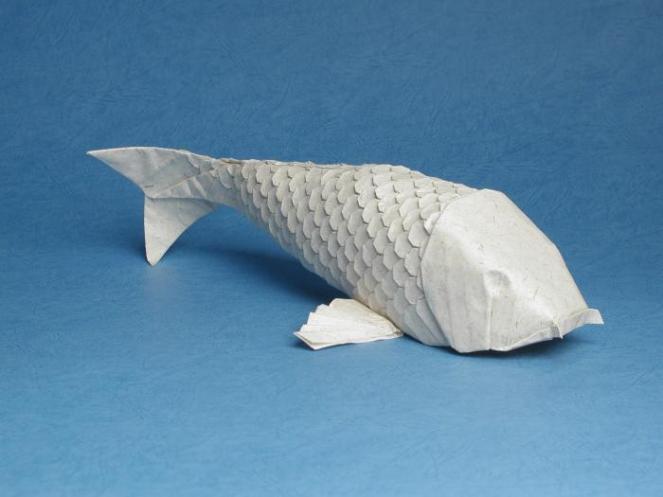
Adèle has been practicing origami since she was two (see below) and that is how we discovered Dr. Lang‘s AMAZING work. We are currently using one of his books for practice and I hope that his art will also inspire you to start folding.
***Disclaimer: This site contains affiliate links, and if you decide to purchase anything from suggested links or companies, I may receive a commission. Recommended products are either things I love using or think would be helpful for you. Making your purchase using these affiliate links helps keep this site running, so thank you kindly!

What Experts Are Saying About Origami: Q&A With the INCREDIBLE Origami Master, Dr. Robert J. Lang
A former physicist, engineer, and R&D manager, Dr. Robert J. Lang is one of the most renown contemporary origami artists. Through his work, Dr. Lang explores the links of origami to math, science and technology and has authored 17 books on the subject. His incredibly realistic work (see videos and photos below) has been exhibited at museums world-wide and has awarded him many high distinctions.
Q. Can you briefly describe who you are?
I’m Robert J. Lang, an origami artist and consultant, living in Alamo, California.
Q. I read that you were introduced to origami at 6 years of age. Do you remember this experience, and if so, what/who inspired you to continue?
I don’t remember the precise moment, but I remember that it was a book of crafts that had instructions for a few traditional origami designs. The thing that attracted me was that all I needed was paper (which was essentially free) and my hands, nothing more.

Q. What specific skills can origami teach kids?
It’s good for hand-eye coordination and is good practice for visualizing things in 3D. But I don’t really look at origami for its utility in teaching skills. I think that folding for the joy of creation should be sufficient reason to pursue it.
Q. What is a good age to introduce origami to children?
There is no minimum age. When a child expresses interest, she or he is ready.

Q. Do you think origami should be taught in schools?
Yes, as one of many arts (e.g., music).
Q. Are you aware of any scientific studies that link effects of origami practice on brain development?
I’ve not seen anything specifically linked to brain development. There are some studies of origami’s utility in education, which have been presented at the OSME conferences and in the associated series of books.

Q. How did your origami practice turn from craft to art? When did you start inventing your own models?
I started designing my own origami at around age 10 or 11. I don’t really see a bright line between “craft” and “art”, so I can’t really say how it turned from one to the other.
Q. For you, is origami about the process or the final product?
Sometimes one, sometimes the other, sometimes both.
Q. How do you approach / handle mistakes? Can they be fixed, or do you throw out / recycle the paper?
“Mistakes” are always an opportunity to learn something new. If a mistake is not going to alter the finished fold—for example, I make a stray crease that shouldn’t be there, but will end up hidden in the interior of the figure—I keep on folding. When I’m done with a sheet of paper, I throw it out, but that means it ends up in recycling.
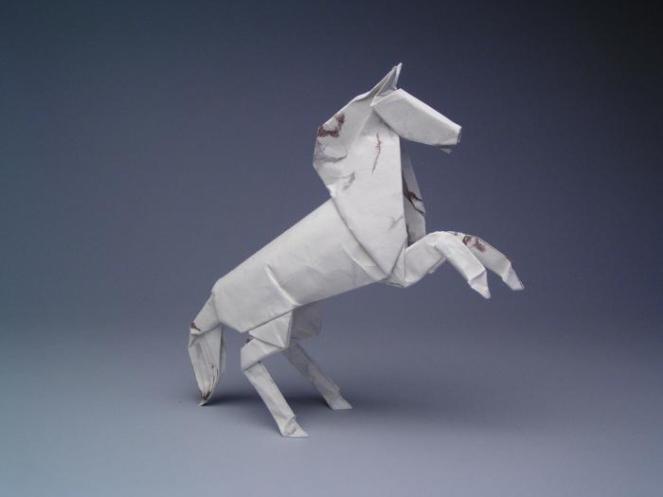
Q. I noticed that you use thick paper with one or two colours (not ones with patterns or illustrations that I have seen in stores). Which paper would you recommend for someone who is just starting out?
I use many different papers, each suited to its particular project. There is no one best paper. I describe several types of paper (and folding media) here: http://www.langorigami.com/article/paper
Q. Which model would you recommend that a beginner start with?
I wouldn’t recommend a specific model. Rather, I’d recommend that a beginner start with a good beginner-level book. Books by Michael LaFosse and Nick Robinson
are particularly good. I also recommend the videos by Sara Adams, found at http://happyfolding.com.
A very nice thing about origami is that the VAST majority of origami books and publications are kid-friendly in subject matter; probably because many, many origami practitioners are kids.
Q. Sometimes I find these diagrams quite challenging. Do you have advice for deciphering them?
It always good to start with easy things, and then slowly work your way up. It’s also helpful to study the keys to the various symbols, but again, start with simple things, then work upward.

One of the great things about origami is that the diagrams convey so much information that it’s often not necessary to read the words; so origami practitioners very often buy and fold from foreign books, even when they can’t read the language, because the diagrams themselves are sufficient. I remember meeting a young man at an origami convention who was 5 years old; he hadn’t learned to read yet, but he could fold everything in John Montroll’s books (which are Intermediate to Complex in difficulty), working solely from the diagrams.
Q. Could you recommend any of your own books?
Of my own books, I’m particularly proud of “Origami Design Secrets” and my newest, “Twists, Tilings, and Tessellations
.” Both are for advanced folders. For beginners to intermediate, I recommend my “Origami in Action
.”
Q. In your TED video, you said that “origami revolves around crease patters.” Is there a minimum amount of creases that one needs to make in order to call something origami?
Different people have their own definition of “origami” (which, as a term, is only about 100 years old). My personal definition is “an art form in which folding is the primary means of creating the shape.” There’s no numerical number of folds; even a single fold could be origami. (In fact, artist Paul Jackson has an entire series of “one-crease origami.”)
Q. I heard that your inspirations come from wildlife. What is your favourite origami wildlife model?
It varies over time, but right now, there’s a cactus that I’m rather fond of.
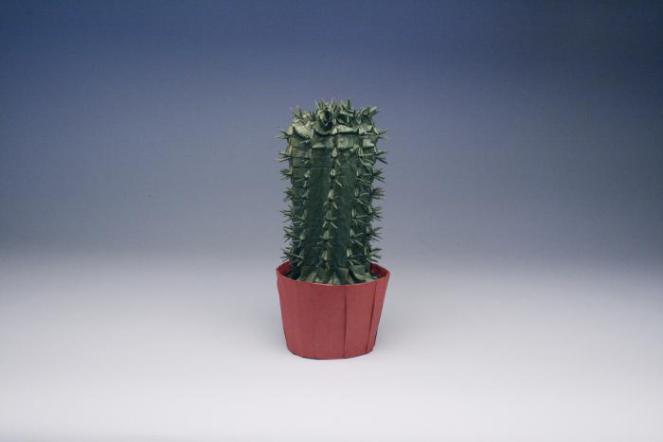
Q. You also mentioned that you “solve problems” with origami. This description sounds like math. Could you talk about this connection and what it means to you?
I use math to design origami, both for artistic purposes, and also to solve technological problems using folding.

Q. I noticed that origami practitioners seem to be predominantly male. Have you found this to be true?
No. In fact, in Japan, for many years, origami was primarily considered to be an activity for women. What you’re seeing is that perhaps the highly visible origami artists are predominantly male. I suspect this is more due to cultural reasons; consider that most of the highly visible chefs are male, despite the fact that (probably) most people who cook are female. Fortunately, we have world-class origami artists like Beth Johnson, Kate Lukasheva, Dasa Serovna, and more, who are role models for girls and women to be more visible in their origami art.
Q. You worked for NASA and used origami principles for objects in space. How do you see future origami applications in real life?
I expect that they’ll continue.
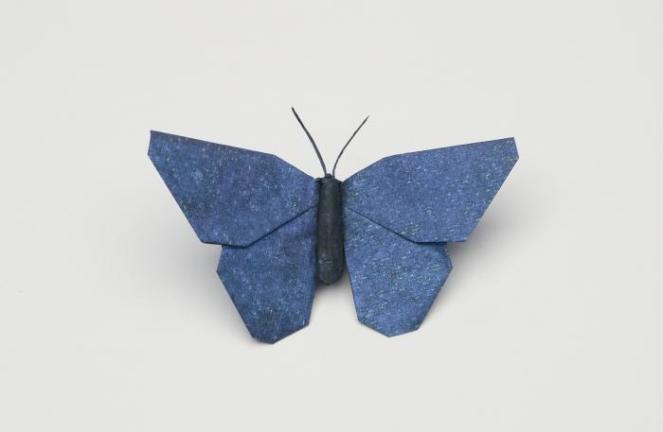
Q. Thank you kindly and warmly.
You’re welcome!
HOW WE ORIGAMI

As mentioned above, I introduced Adèle to origami when she was 2 years old. We were migrating from Australia to Europe and I wanted a light, yet versatile toy for our 24+ hour long journey. The idea was that I’d fold different models for her and we’d use them as toys on the plane. Instead, she started folding (paper, restaurant napkins, clothes, etc.) and has been doing it every day ever since. After a year of daily practice, she was able to fold 3D tulips like this one…

…and after another 6 months, started invented her own, original origami designs like this rocket ship and lotus:
In order to help her with this passion, I have been teaching myself origami. It’s been an enlightening experience so far and we’ve both learned a lot along the way.
WHAT YOUR CHILD CAN LEARN FROM A SINGLE SHEET OF PAPER
Personally, I use origami as a mindfulness art activity, but here are a few ways in which origami can help your child:
- Following diagrams / instructions from start to finish provides a sense of accomplishment. Regular origami practice improves confidence. This, in turn, has a positive affect on your child’s well-being.
- Practicing folding reinforces concentration, focus and patience.

- Origami can be used as a therapeutic, mindfulness or relaxation practice.
- Folding helps develop fine motor skills.
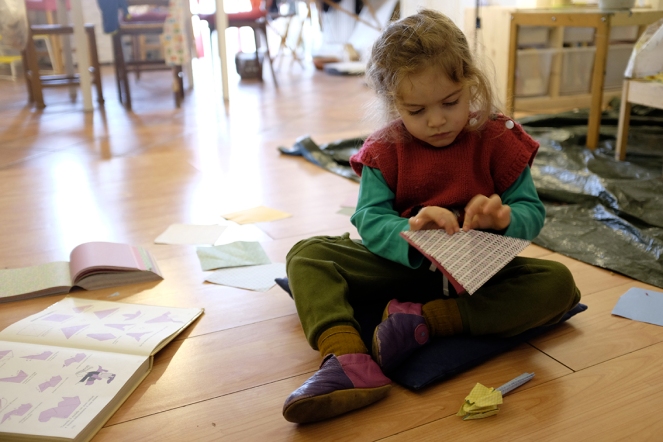
- You can use origami to teach math principles. It can also be used as a STEM activity.
- Origami makes a beautiful, personal gift. Wherever we go, Adèle spread love with origami by giving her creations to people she encounters (cafe waiters, flight attendants, librarians, friends, family, etc.)

Adèle made this origami dog for a friend. 
Great-great-grandmother loves her origami heart with wings <3. - Folding a sheet of paper to make a recognizable form stimulates creativity.
- Creating something from a simple piece of paper is magical and fun.
ORIGAMI MATERIALS FOR BEGINNERS
I have found Djeco sets to be particularly helpful in teaching her the basics. We’ve tried them all and this is why we loved them:
- Each set comes with a small instructional booklet.
- Instructions are wordless, but very easy to understand.
- Each set includes paper which has fun, child-friendly designs.
- Each piece of paper has crease lines PRINTED on reverse. These lines have numbers on them. This is awesome in two ways. First, kids who are learning how to count can use this activity to reinforce math skills. And the second reason is that having printed lines allows little ones to practice folding “on the line.” This, in turn, helps them make more precise folds and prepares them for more complex origami.
- Each set comes with fun stickers to add to the designs (eyes, whiskers, pilots, tongues, etc.).
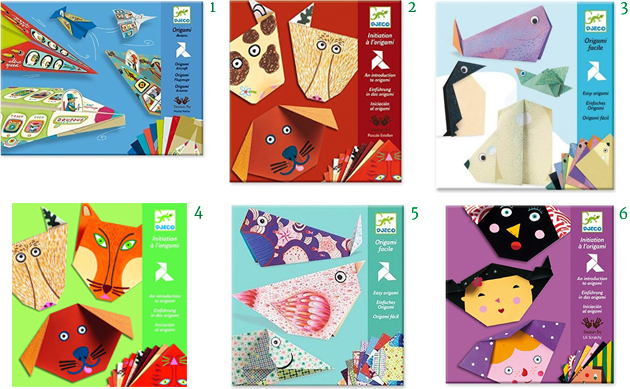
- Djeco Origami – Aircraft
- Djeco Beginning Origami Kit – Animals
- Djeco Origami – Polar Animals
Djeco Origami – Animals
- Djeco Origami – Big Animals Novelty
- Djeco Introduction to Origami – Faces
ORIGAMI KITS FOR OLDER KIDS

- Origami Zoo Kit: Make a Complete Zoo of Origami Animals!
– This is the very first set that I got for our long flight. It was not easy to fold, so it’s more suitable for intermediate-level folders. It comes with a book which contains beautiful photos and detailed instructions for 15 origami models. 40 papers are included, each printed with patters that relate to specific animals and birds. In addition, there rare almost 100 stickers (animal eyes, noses, etc.) and a fold-out, large map of a zoo on which your child can place their folded animals to play with. Overall, it’s a fun set that your child can enjoy for a long time.
- My First Origami Kit
– Similar to the above-mentioned kit, this one also comes with a book, but contains more papers, more stickers and more projects. The models are a little easier to make than the Origami Zoo kit, but are still more suited for older kits.
- Origami 365
– You can make 12 models with this kit, but it comes with enough paper to make one origami every day of the year. A creative way to encourage origami-making on daily bases.
ORIGAMI PAPERS FOR BEGINNERS
Here are some of the papers we like to use. These papers don’t hold form and details as well as professional origami papers, but are perfect for practice, especially when just starting out.

- Once Adèle mastered the above-mentioned sets, she started using Origami Papers by Djeco
. This set contains 100 sheets as it comes with interesting patters and a small instructional booklet. After a few weeks of use, we needed A LOT more paper, so for now, we usually get her pre-printed sheets of 500 or more squares.
- Folia Semi-Transparent Origami Paper – 8 x 8 inch bulk pack of 500 sheets
- 500 maxi origamis – These come in packs of 500 or 1040 and we purchase them every time we travel to France. So, for my French readers – you can also find these in big bookshops like Sauramps.
- Origami Paper 500 Sheets
– Premium quality, 6-inch Square Sheets, 20 vivid colors, same color on both sides, 100 design e-Book included
- Origami Paper 500 sheets Kaleidoscope Patterns 6″ (15 cm)
– Tuttle Origami paper: high-quality origami sheets printed with 12 different designs, comes with instructions for 8 projects
- DOURA Origami Paper 750 Sheets Economy Pack with Storage
– 6 inch square sheet with 25 vivid colors – fun for kids and gift-making
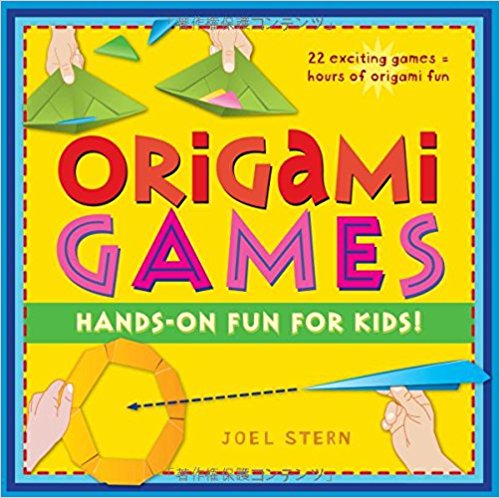 As something a little different, also check out Origami Games
As something a little different, also check out Origami Games which provides hands-on fun for Kids! It includes 22 cooperative and competitive games and 21 foldable pieces.
ORIGAMI BOOKS FOR KIDS
You can make a DIY origami Display Book by printing out interesting diagrams you find online. But I prefer to support artist that put so much hard work in making origami accessible to others. So, here are some of my book suggestions for beginner origami books for kids:

- Easy Origami by John Montroll – 30 Simple project, great for beginners.
- Origami Magic by Florence Temko – Another excellent book for beginners.
- Origami Zoo: An Amazing Collection of Folded Paper Animals
by Dr. Robert J. Lang – This books is out of print, but you can find it used online. The publisher describes it best: “As children’s toys or decorations, the fun and artistic projects in Origami Zoo is a perfect do-it-yourself paper folding crafts book for aspiring artists.”
HAPPY FOLDING! ❤
Has your child tried origami? If so, remember to tag me on Instagram as @Rainy.Day.Sunny.Play and use the #Rainy.Day.Sunny.Play hashtag. We love seeing your creations!


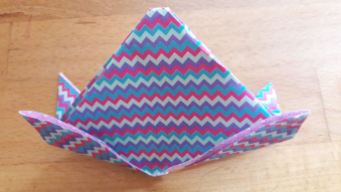
very nice article
LikeLike
Reblogged this on msamba.
LikeLike
Amazing loved the article to the core its origami101 for beginners…I have never tried my hands on origami but always wanted to I guess its the right time I should start with my son.
LikeLike
Please share your creations once you get started. HAVE FUN!
LikeLike
This is such an informative article on Origami. I loved it. Though my daughter is a keen craft enthusiast she never developed liking for the art of origami. However I always wan ted her to as I feel it helps a lot in creative expression and building concentration also. Thanks for this article amnd interview , now I know how to introduce her to origami and which are the best resources for beginners.
LikeLike
With kids, sometimes it’s about the way something is introduced and also about timing. If she didn’t like it before doesn’t mean that she won’t in the future. Also, often the resources and materials make all the difference. 😉
LikeLiked by 1 person
Robert Lang is one of my favourite designers. I have folded many of his models
LikeLike
Oh, really!?!? I’m still struggling with even intermediate level diagrams. But as he said in the interview, it takes practice and patience. So, I hope I’ll be able to fold some of his models soon. We just recently got his “Origami Zoo” book, so have been practicing with it…
LikeLiked by 1 person
I’ve got a copy of that! It’s a good book. Practice, patience, focus on accurate folding and try different paper types. Let me know how you get on.
LikeLike
Wow! These sculptures are amazing. I can’t believe they are made with paper!
LikeLike
I know, right! So amazing to see what one can do with focus and dedication!
LikeLike
Wow!!! Those are so amazing! The detail is so intricate! Wow!
LikeLike
It’s amazing what one can do with a single sheet of paper, isn’t it!
LikeLike
So cool! It’s been a very long time since I’ve done origami
LikeLike
Time to start again? 😉
LikeLike
Just wow! I’m so speechless at the moment.I love the cactus especially. My eldest has been very interested in learning origami. I will show her this article. Thanks again! 🙂
LikeLike
The cactus is one of my favorites, too. Did you realize that the humming bird and the plant are all made from paper, too!?
LikeLike
Wow fantastic interview with the Master himself. ADELE is simply brilliant. In one year she could do the tulips wow.
LikeLike
Awww, thank you, that’s very kind. She really liked the tulip for some reason and, honestly, I didn’t think she understood when I was showing her the folds, but she did. And just kept practicing and practicing. After about half a year she remembered all the steps, but couldn’t tuck in the sides so I helped with that part. And then after another half a year she started tucking them in by herself. I have boxes full of tulips she made hihi. 🙂
LikeLike
Wow.. we used to make paper flowers and boats as kids. but your girl’s creations are awesome.
LikeLike
Aww, thank you! She says she is an “origami artist.” 😀
LikeLiked by 1 person
These are so fun! I used to love doing origami (although they were never this good). I may have to start again and get my step-kids involved!
LikeLike
I don’t even know how to make the tulip anymore. Adèle has to teach ME now. hihi 😀
LikeLike
Oh my gosh I love this! Such a great traveling activity, and such a sweet way to spread some joy by giving them away:)
LikeLike
We literally take paper with us EVERYWHERE. But yes, for travel it’s amazing because possibilities are endless!
LikeLike
these are pretty amazing! I hope to try this out! im sure it takes a lot of patience! Thanks for the share! ❤
LikeLike
Yes, it DOES take a LOT of patience, which is one of the reasons why it’s great. It helps build patience.
LikeLiked by 1 person
These are amazing. That’s some serious talent!
LikeLike